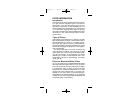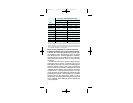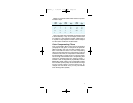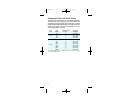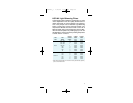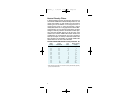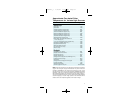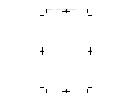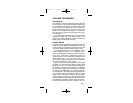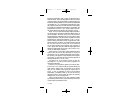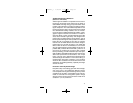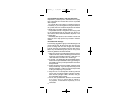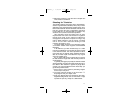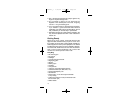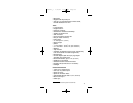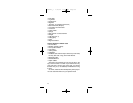8/99 9
TIPS AND TECHNIQUES
I n t ro d u c t i o n
This collection of ideas is provided by Kodak people and
others who work in the professional motion picture indus-
try. The section covers topics from force processing, fla s h -
ing, and shooting for television to what you need in the
well-stocked ditty bag, and tools to survive. Also in this
section (on the double foldout pages), is a fil m m a k e r ’ s
flow chart that can help you through the tasks of pro d u c-
tion scheduling.
If you have further questions about our films or their
applications, please refer to the last few pages in this
guide for the names, addresses, and phone numbers of
Kodak people worldwide who can help.
Aspect Ratios
The aspect ratio is the relationship between the width and
height of an image. While the image dimensions may vary
in size according to projection re q u i rements, the aspect
ratio should comply with the cinematographic intent.
The industry standard for 35 mm theatrical motion
p i c t u r es remained a constant 1.37:1 between the intro-
duction of sound and the introduction of Cinemascope in
1953, when “wide-screen” presentations arrived. The
non-anamorphic or “flat” wide-screen presentations had
aspect ratios of 1.66:1, 1.75:1 and 1.85:1. Today 1.85:1
is the wide-screen (flat) presentation format of choice in
the USA, while in Europe 1.66:1 is used.
In the early 1950’s, television’s demand for feature fil m s
i n c reased. The typical television display provides a fix e d
aspect ratio of 1.33:1 (4 x 3) and many of the films shown
on television, to fill the picture height, lost a substantial
part of the image when this was “matted off” at the edges.
To rectify this incompatibility, the “Academy aperture ”
was introduced for flat (non-anamorphic) pre s e n t a t i o n s .
The Academy aperture produced an image of gre a t e r
height so that it would fill a television screen without
c o m p romising the width. The usual pro c e d u re when
filming productions for both theatrical release and conven-
tional television transmission is called “shoot and pro t e c t .”
The camera viewfinder is “matted” to indicate 1.85:1 for
033text_c 1/16/02 11:07 AM Page 59



